First Things First: Commencing the Conservation of the Jabach Portrait

Met photographer Juan Trujillo photographing the painting. The white rectangular patches on the picture are facing papers that were temporarily applied to the surface to protect insecure areas of paint for the work's transportation to New York. Photograph by Michael Gallagher
«I had first seen the Jabach family portrait in a warehouse in London over a year ago and loved it, but I'll admit that when it finally arrived in our paintings conservation studio at the Museum this past June, I was a bit overwhelmed—it's enormous! Fortunately, the work's current condition needs to be fully documented before conservation can begin. This not only helps a conservator understand the painting and its issues but also provides some breathing space and thinking time.»
Once Met photographer Juan Trujillo carefully recorded the front and reverse of the painting, I began to examine the layer of varnish covering the work. It's very discolored and definitely not original; it was most likely applied at either the end of the nineteenth century or the very beginning of the twentieth. A varnish is a key component of paintings from this period because it fully saturates the colors and reveals the complete tonal range, which is vital to all the pictorial effects of space and volume that the artist created. When the varnish oxidizes and severely discolors—as it did in this case—it does just the opposite, distorting and deadening the colors and substantially reducing the tonal range. That's why we take it off.
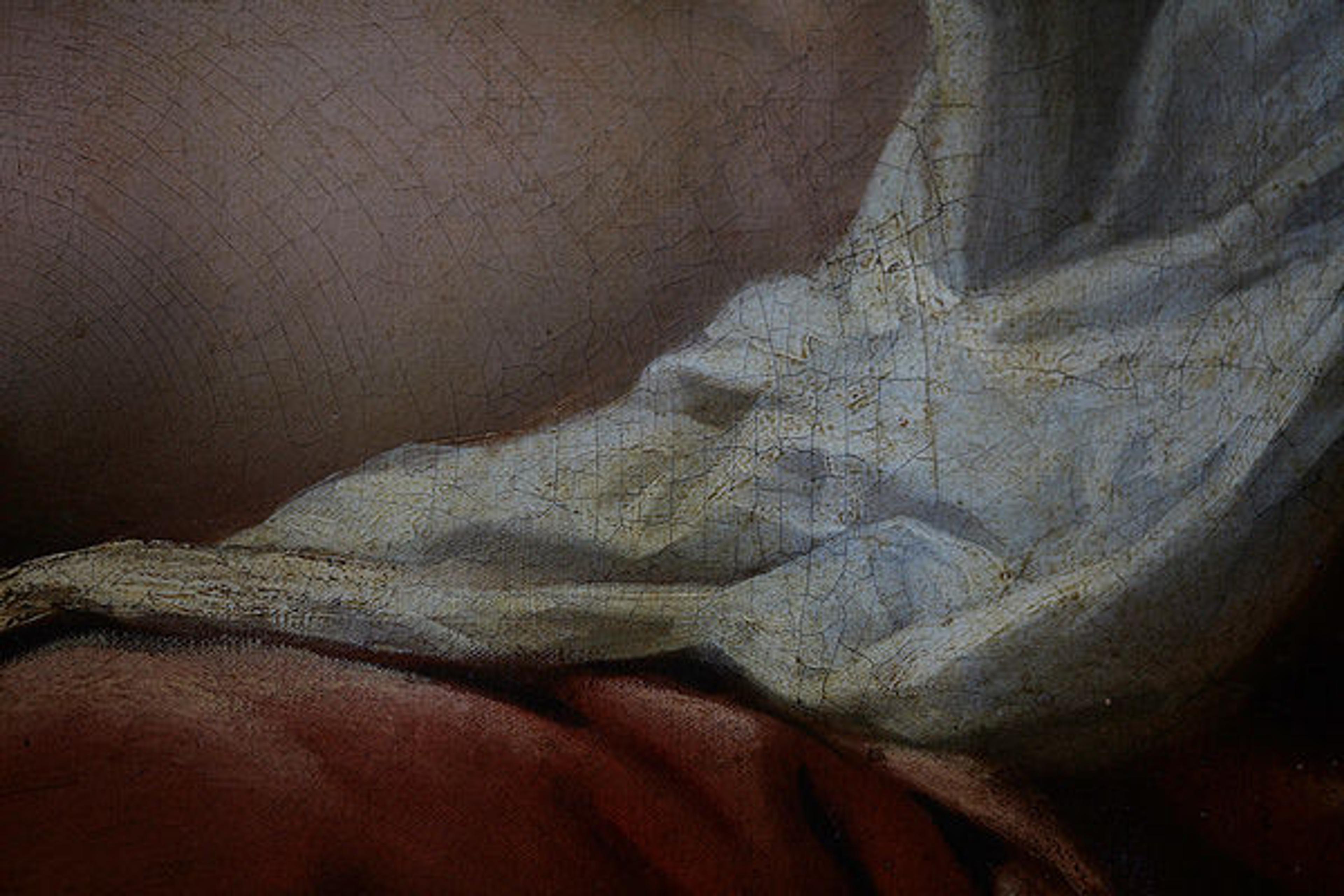
The painting's discolored and uneven varnish is clearly evident on the white drapery below baby Heinrich (shown here before treatment). Photograph by Michael Gallagher
Following tests to establish a safe and effective way of removing the old, discolored varnish, I began the process of cleaning the work. It's extraordinarily well painted and generally in great condition, so this is very exciting and rewarding. In the following photographs, you can see how the removal of the dark, yellowed varnish reveals Heinrich's pink toes as well as Charles Le Brun's assured painting technique.
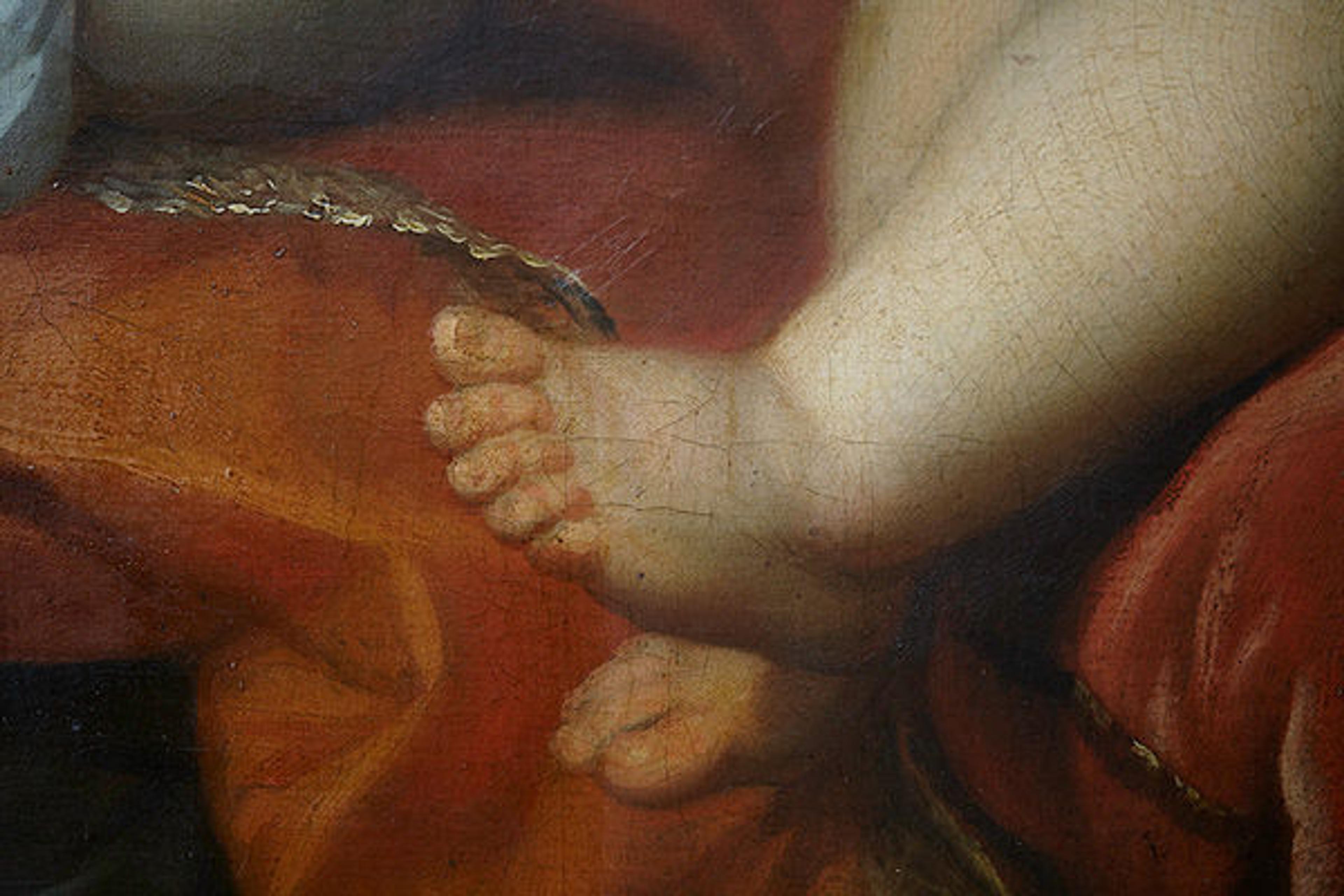
Heinrich's foot before cleaning. Photograph by Michael Gallagher
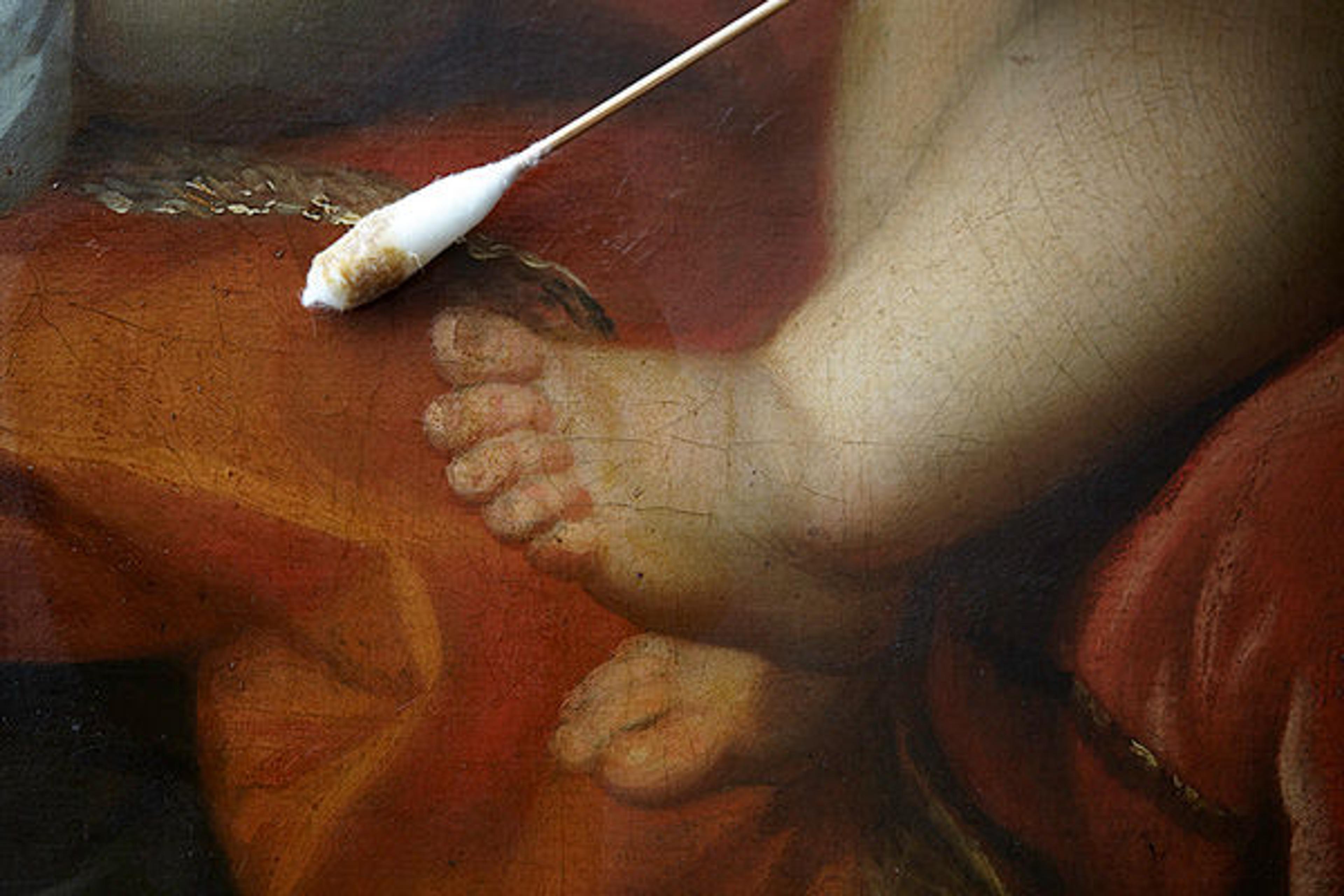
Solvent, applied to the surface using a cotton swab, begins to swell and dissolve the oxidized varnish. The paint layer is unaffected. Photograph by Michael Gallagher

The swab is rolled across the surface, gradually absorbing the discolored, and now solubilized, varnish. Photograph by Michael Gallagher
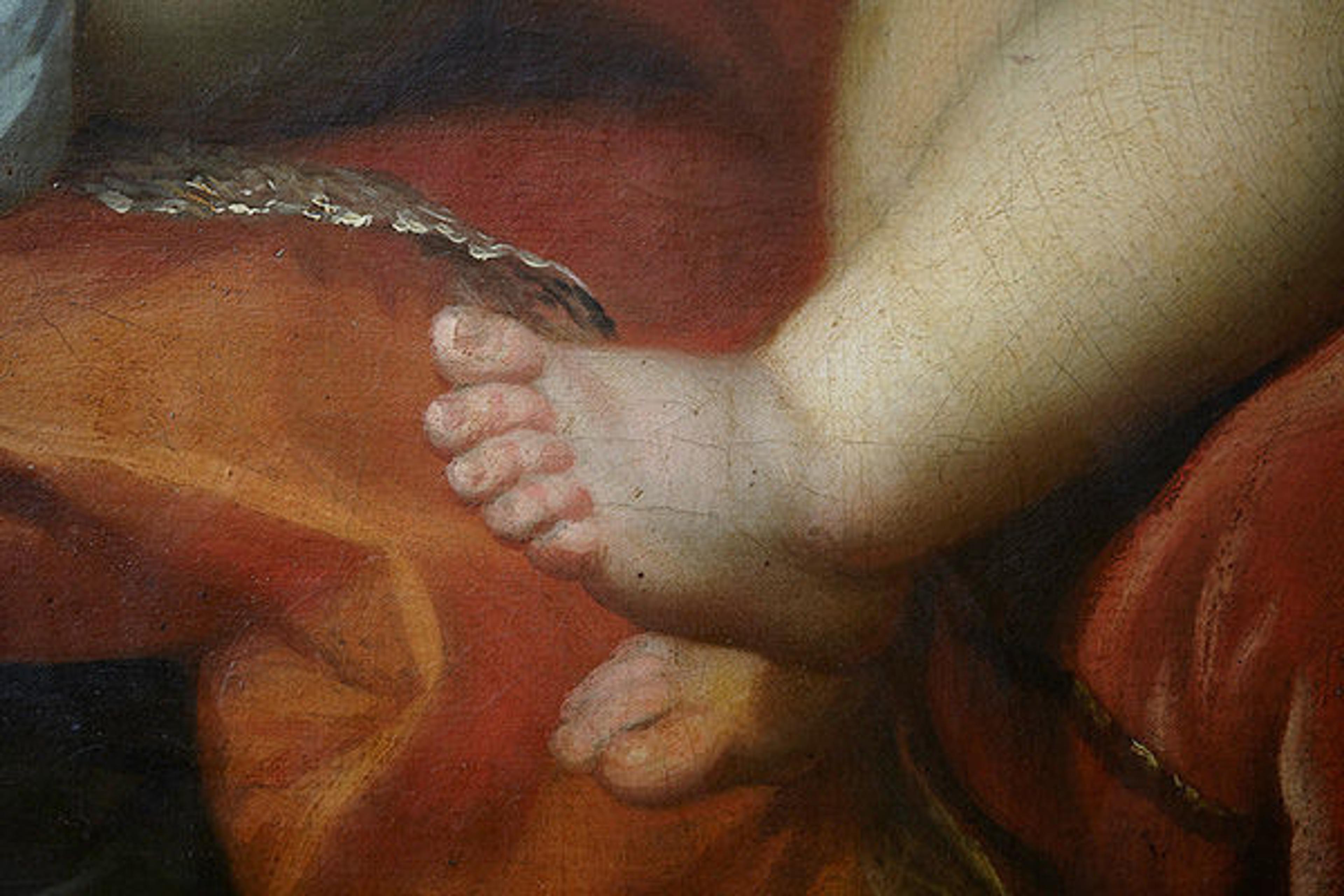
The original colors begin to emerge. Photograph by Michael Gallagher
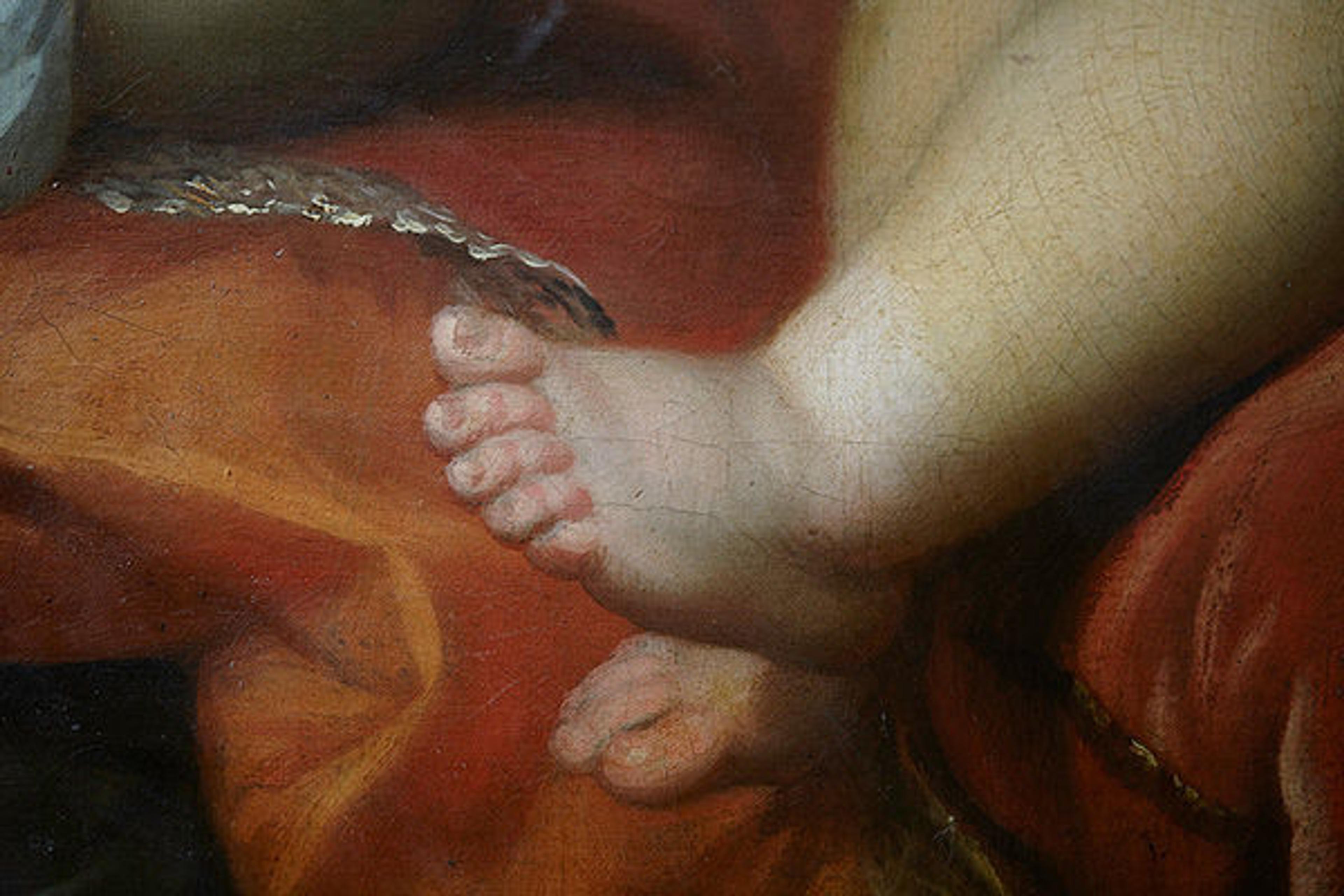
The foot and part of the ankle are now clear of varnish, revealing the rosy flesh tones against the rich orange fabric. Photograph by Michael Gallagher
I'll share more images in future posts.
Michael Gallagher
Michael Gallagher is the Sherman Fairchild Chairman of the Department of Paintings Conservation.